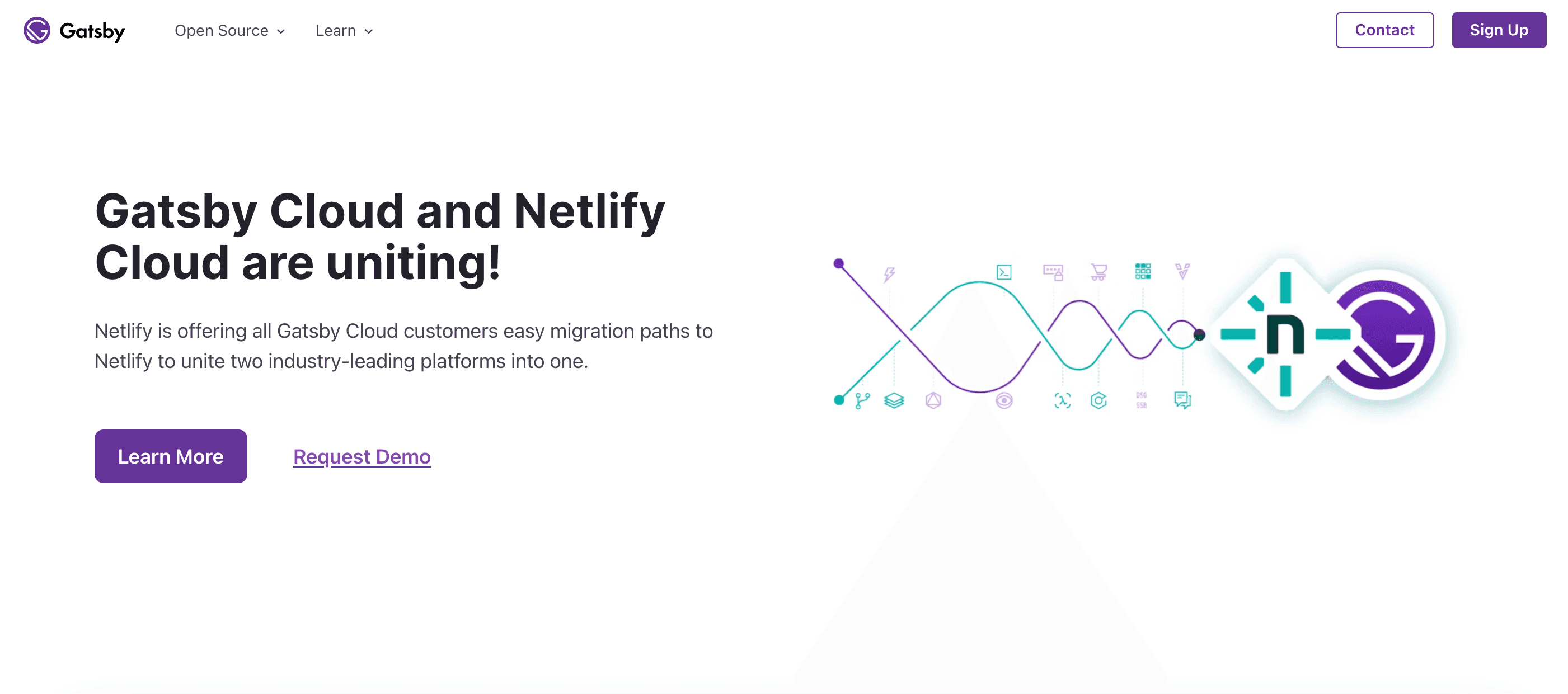Next.js vs Gatsby: Comparing Server-Side Rendering Capabilities
- User Experience

The choice of framework or library can significantly impact the performance and scalability of your application. Regarding server-side rendering (SSR) in React-based applications, two prominent contenders stand out: Next.js vs Gatsby. Both frameworks offer powerful SSR capabilities, but understanding their nuances is essential for making an informed decision.
Join Kapsys as we explore the intricacies of Next.js vs Gatsby, focusing specifically on their SSR capabilities.
Introducing SSR
Server-side rendering (SSR) is used in web development to render web pages on the server before sending them to the client's web browser. In traditional client-side rendering (CSR), web pages are initially rendered in the browser using JavaScript, which fetches data from APIs and dynamically generates the content.
SSR offers several advantages, including:
Improved Performance: SSR can lead to faster initial page loads because the server sends pre-rendered HTML to the client, reducing the time required to render the page in the browser.
SEO Benefits: Search engine crawlers can quickly parse HTML content generated on the server, improving search engine visibility and indexing of web pages compared to purely client-rendered applications.
Enhanced User Experience: With SSR, users may see meaningful content more quickly, leading to a smoother and more engaging browsing experience, especially on slower or less capable devices.
Accessibility: SSR can provide a more accessible experience by delivering content to users who have JavaScript disabled or are using assistive technologies that rely on static HTML content.
SSR is commonly used in frameworks like Next.js vs Gatsby and Nuxt.js.
What is Next.js
Next.js is a versatile React framework designed to simplify the creation of server-rendered React applications. Developed by Vercel, Next.js has gained widespread adoption due to its intuitive API, excellent developer experience, and robust SSR support. At its core, Next.js seamlessly integrates with React, offering a streamlined development process for building dynamic web applications.
One of the defining features of Next.js vs Gatsby is its built-in support for SSR, which enables developers to pre-render React components on the server before sending them to the client. This approach enhances performance and facilitates search engine optimization (SEO), making Next.js a popular choice for content-driven websites and progressive web applications (PWAs).

Key features of Next.js:
Server-side Rendering (SSR): Next.js excels in SSR, allowing developers to pre-render React components on the server, resulting in faster initial page loads and improved SEO.
Static Site Generation (SSG): In addition to SSR, Next.js supports static site generation, enabling the generation of static HTML files at build time for improved performance and scalability.
Code Splitting: Next.js vs Gatsby automatically splits JavaScript bundles, ensuring optimal performance by only loading the code required for each page.
API Routes: Next.js provides built-in support for API routes, simplifying the creation of server-side APIs without additional dependencies.
TypeScript Support: Next.js offers seamless integration with TypeScript, enabling static typing for enhanced developer productivity and code reliability.
Read: Why Choose Next.js for Your Next Web Project?
Exploring Gatsby
Gatsby is another popular React framework renowned for its blazing-fast performance and robust SSR capabilities. Developed by a vibrant open-source community, Gatsby leverages modern web technologies such as GraphQL and webpack to deliver highly optimized web experiences. While Next.js vs Gatsby share similarities, they adopt a different approach to SSR and static site generation.

Key features of Gatsby:
GraphQL Data Layer: Gatsby utilizes GraphQL as a unified data layer, enabling developers to source data from various locations, such as APIs, databases, and Markdown files.
Static Site Generation (SSG): Next.js vs Gatsby excels in SSG, generating optimized static HTML files at build time for rapid page loads and enhanced SEO.
Plugin Ecosystem: Next.js vs Gatsby boasts a vast ecosystem of plugins that extend its functionality, allowing developers to integrate with third-party services, optimize images, and perform other tasks seamlessly.
Optimized Performance: With its focus on performance, Gatsby optimizes images, lazy loads assets, and prefetches resources, ensuring lightning-fast page transitions and superior user experiences.
Developer Experience: Gatsby prioritizes developer experience by offering features like hot reloading, automatic code splitting, and an intuitive plugin architecture, making it easy to create and maintain high-quality websites.
Read: How To Improve Your Gatsby Website Performance
Next.js vs Gatsby: Comparing SSR Capabilities
While Next.js vs Gatsby excels in SSR and static site generation, they employ different approaches to achieve these goals. Understanding the distinctions between the two frameworks is crucial for selecting the most suitable solution for your project requirements.
SSR implementation
Next.js: Next.js vs Gatsby adopts a hybrid approach to SSR, offering both server-side rendering and static site generation. With its getServerSideProps and getStaticProps functions, developers can choose between server-side rendering and static generation based on the data requirements of each page.
Gatsby: Gatsby focuses primarily on static site generation, where pages are pre-rendered at build time using data retrieved from the GraphQL data layer. While Gatsby does support server-side rendering through plugins like gatsby-plugin-react-helmet, its SSR capabilities are less extensive than Next.js.
Data fetching
Next.js: Next.js vs Gatsby provides flexibility in data fetching, allowing developers to bring data at runtime using server-side rendering or at build time using static site generation. This approach is advantageous for dynamic content that requires real-time data fetching.
Gatsby: Gatsby's data fetching occurs primarily at build time, where data is sourced from various locations and transformed into static HTML files. While Gatsby supports server-side data fetching through serverless functions or client-side requests, its emphasis on static generation may only suit some use cases.
Read: How To Migrate Existing App From React To Next js
Performance
Next.js: With its emphasis on server-side rendering and automatic code splitting, Next.js vs Gatsby offers excellent performance. By pre-rendering pages on the server and optimizing code delivery, Next.js ensures fast initial page loads and seamless user experiences.
Gatsby: Gatsby's focus on static site generation results in unparalleled performance for content-heavy websites. By generating optimized static HTML files and leveraging client-side hydration, Gatsby achieves blazing-fast page loads and superior SEO performance.
Read: Boosting Website Performance with Gatsby.js: Tips and Tricks
Developer experience
Next.js: Next.js vs Gatsby offers a streamlined developer experience with its intuitive API and seamless integration with React. Developers familiar with React can quickly get up to speed with Next.js, thanks to its minimal configuration requirements and built-in features such as routing and CSS support.
Gatsby: Gatsby prioritizes developer experience by providing a rich ecosystem of plugins, starters, and themes. Developers can leverage Gatsby's extensive plugin architecture to add functionality to their projects, such as image optimization, analytics integration, and content management systems.
How to Choose Between Next.js vs Gatsby
Choosing between Next.js vs Gatsby depends on several factors, including project requirements, team expertise, and development preferences. Here's a guide to help you make an informed decision:
Project Requirements: Decide if your project needs dynamic content with real-time data fetching (Next.js) or benefits from static site generation (Gatsby).
Performance Goals: Assess if you prioritize fast initial page loads (both frameworks offer strong performance).
Data Fetching: Determine if you need flexibility in data fetching (Next.js) or if data can be pre-fetched and statically generated (Gatsby).
Team Expertise: Consider familiarity with React and GraphQL versus RESTful APIs.
Development Preferences: Choose between a streamlined development experience (Next.js) or extensive plugin options and ecosystem (Gatsby).
Community Support: Check community size and activity and the availability of plugins and extensions.
Whether you choose Next.js vs Gatsby, both frameworks offer powerful SSR capabilities and can deliver high-performance, scalable web applications. By carefully considering your project requirements, team expertise, and development preferences, you can choose the framework that best suits your needs and ensures a successful outcome for your project.
Read: Why Next.js is a Game Changer for React Developers

Conclusion
Next.js vs Gatsby are formidable choices for building server-rendered React applications. While Next.js offers a hybrid approach to SSR with support for server-side rendering and static site generation, Gatsby excels in static site generation with its robust GraphQL data layer and plugin ecosystem.
When choosing between Next.js vs Gatsby, consider the specific requirements of your project, such as data fetching needs, performance goals, and developer experience preferences. Whether you prioritize flexibility, performance, or ease of use, both frameworks offer powerful SSR capabilities that can elevate your web development projects to new heights.
Ultimately, the decision between Next.js vs Gatsby boils down to your project's unique needs and your team's preferences.
Keep up with Kapsys to learn about Next.js and so much more!


